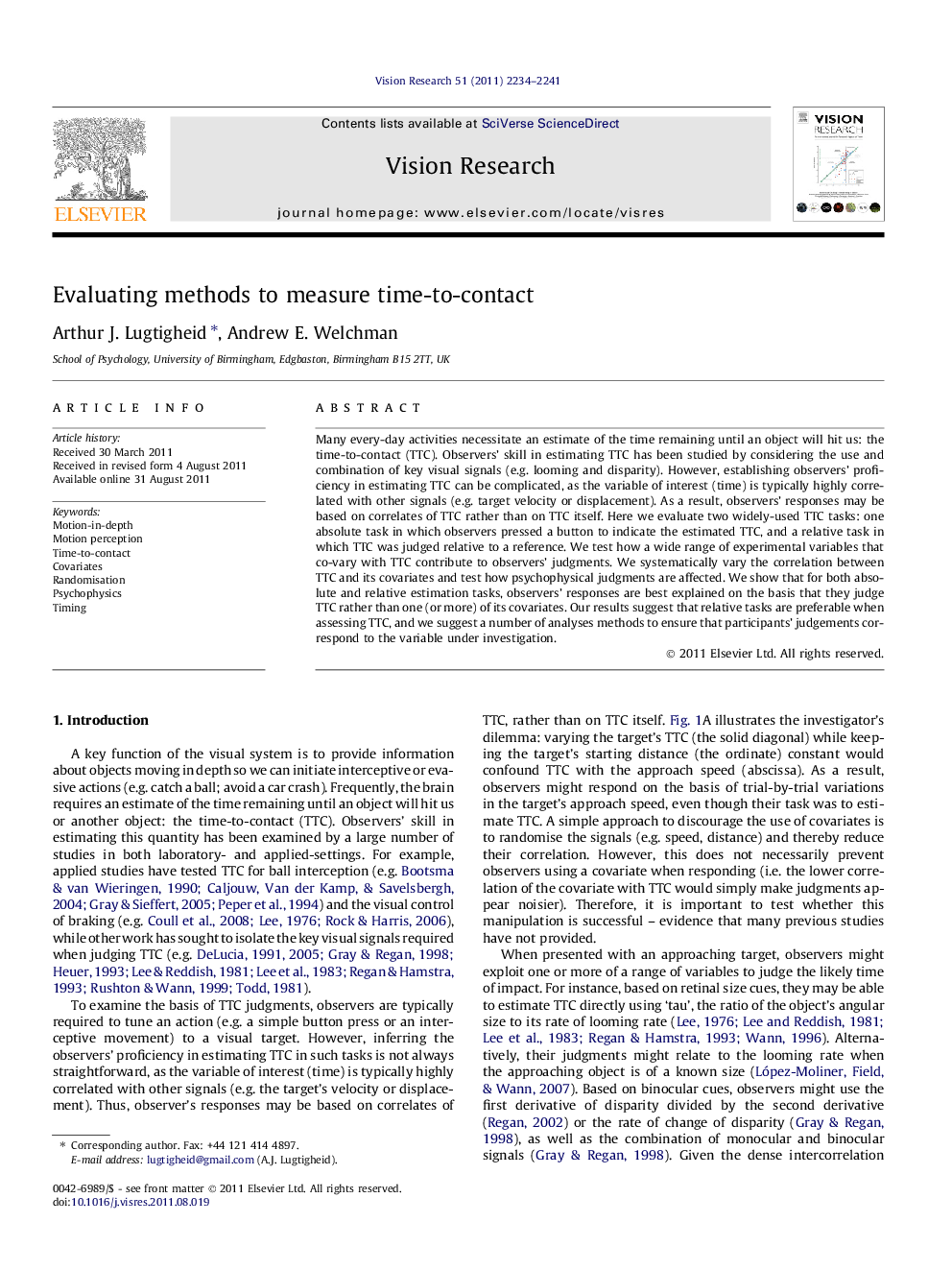| Article ID | Journal | Published Year | Pages | File Type |
|---|---|---|---|---|
| 4034128 | Vision Research | 2011 | 8 Pages |
Many every-day activities necessitate an estimate of the time remaining until an object will hit us: the time-to-contact (TTC). Observers’ skill in estimating TTC has been studied by considering the use and combination of key visual signals (e.g. looming and disparity). However, establishing observers’ proficiency in estimating TTC can be complicated, as the variable of interest (time) is typically highly correlated with other signals (e.g. target velocity or displacement). As a result, observers’ responses may be based on correlates of TTC rather than on TTC itself. Here we evaluate two widely-used TTC tasks: one absolute task in which observers pressed a button to indicate the estimated TTC, and a relative task in which TTC was judged relative to a reference. We test how a wide range of experimental variables that co-vary with TTC contribute to observers’ judgments. We systematically vary the correlation between TTC and its covariates and test how psychophysical judgments are affected. We show that for both absolute and relative estimation tasks, observers’ responses are best explained on the basis that they judge TTC rather than one (or more) of its covariates. Our results suggest that relative tasks are preferable when assessing TTC, and we suggest a number of analyses methods to ensure that participants’ judgements correspond to the variable under investigation.
► There is large variability in the accuracy of absolute estimates of TTC. ► Randomisation affects the precision of absolute estimates, but not its accuracy. ► Between-subject variability is significantly reduced in a relative task. ► In relative tasks, randomisation increases thresholds of covariates, but not TTC. ► TTC best accounts for observers’ responses, rather than its covariates.
